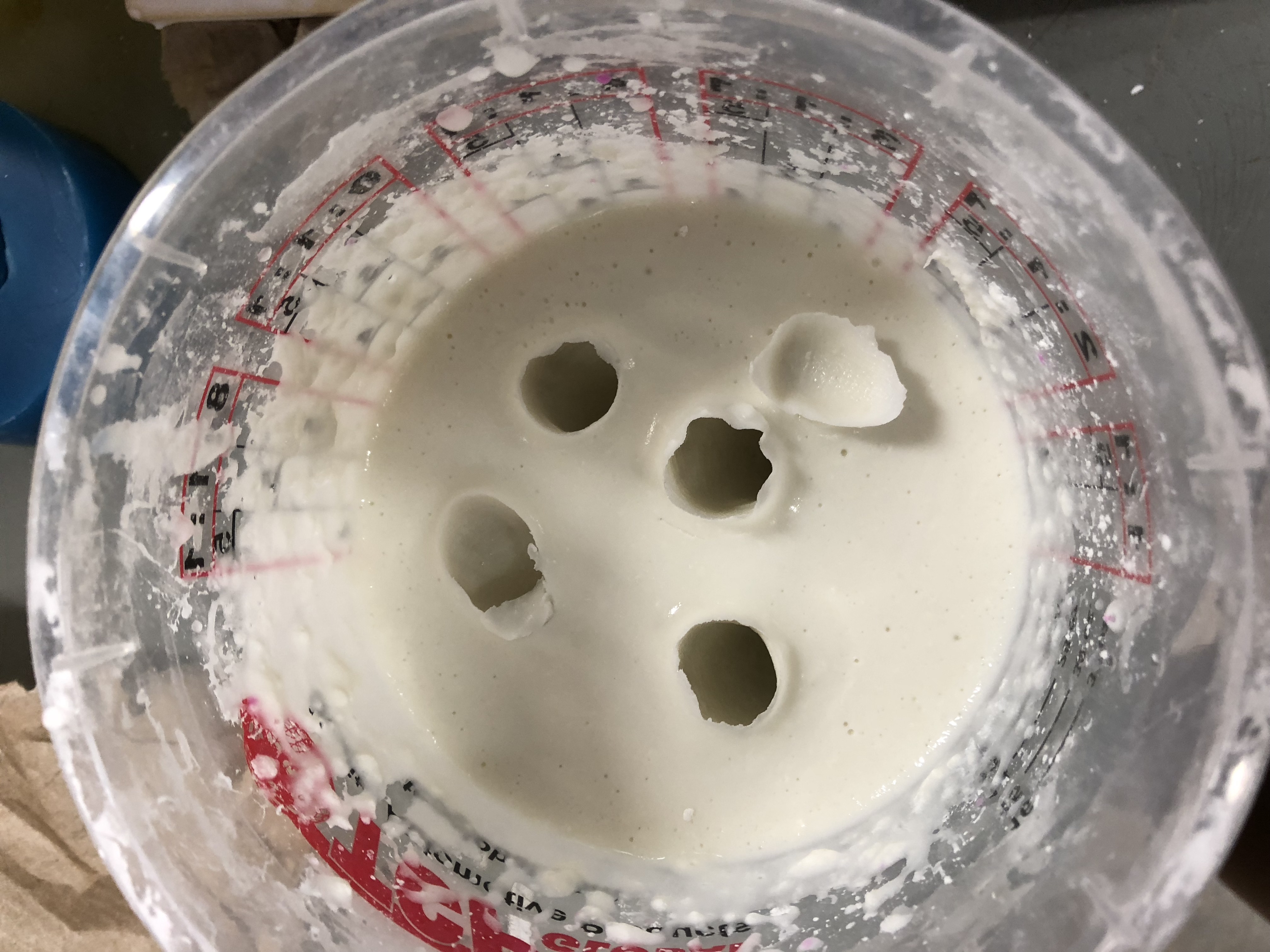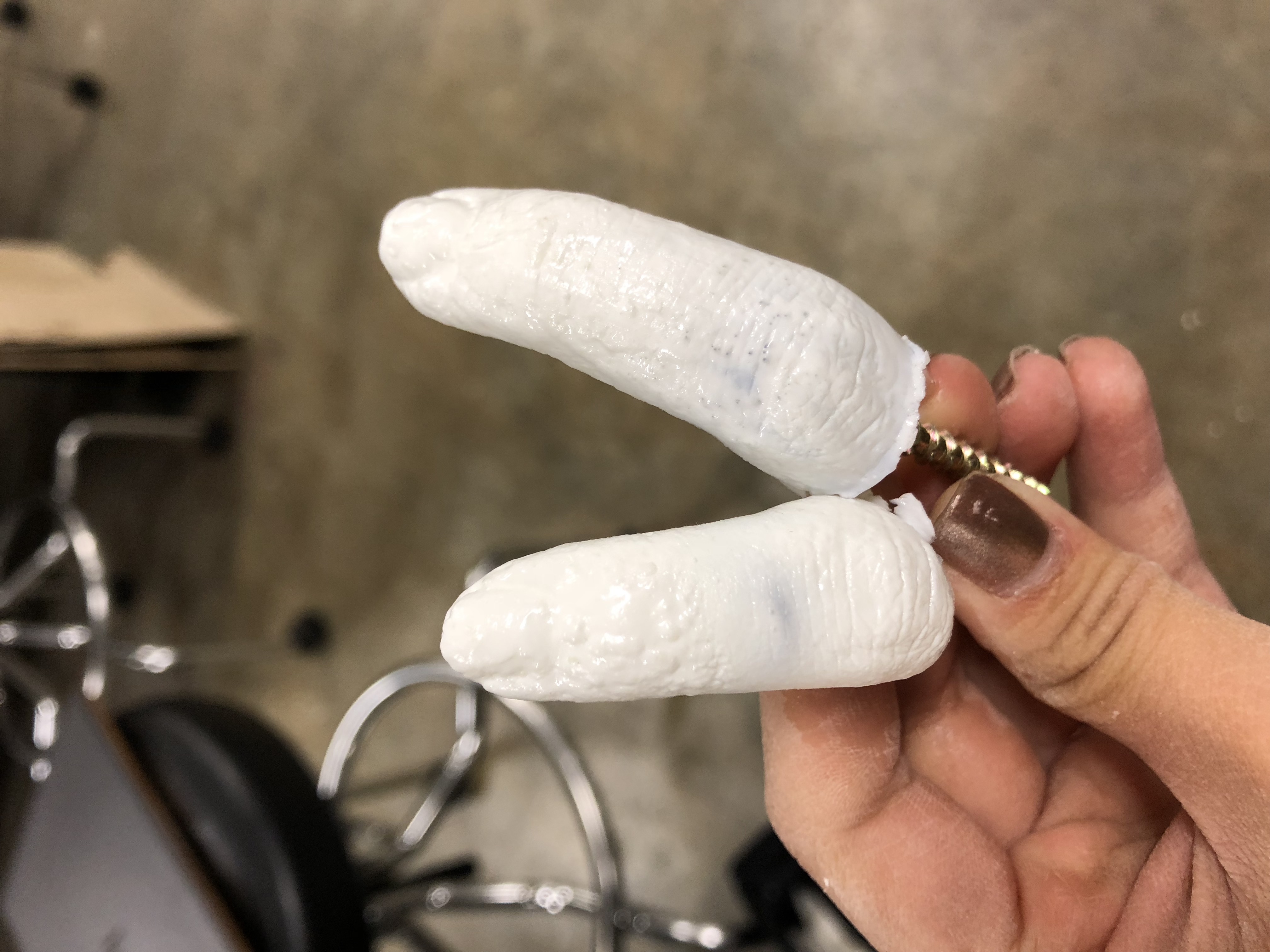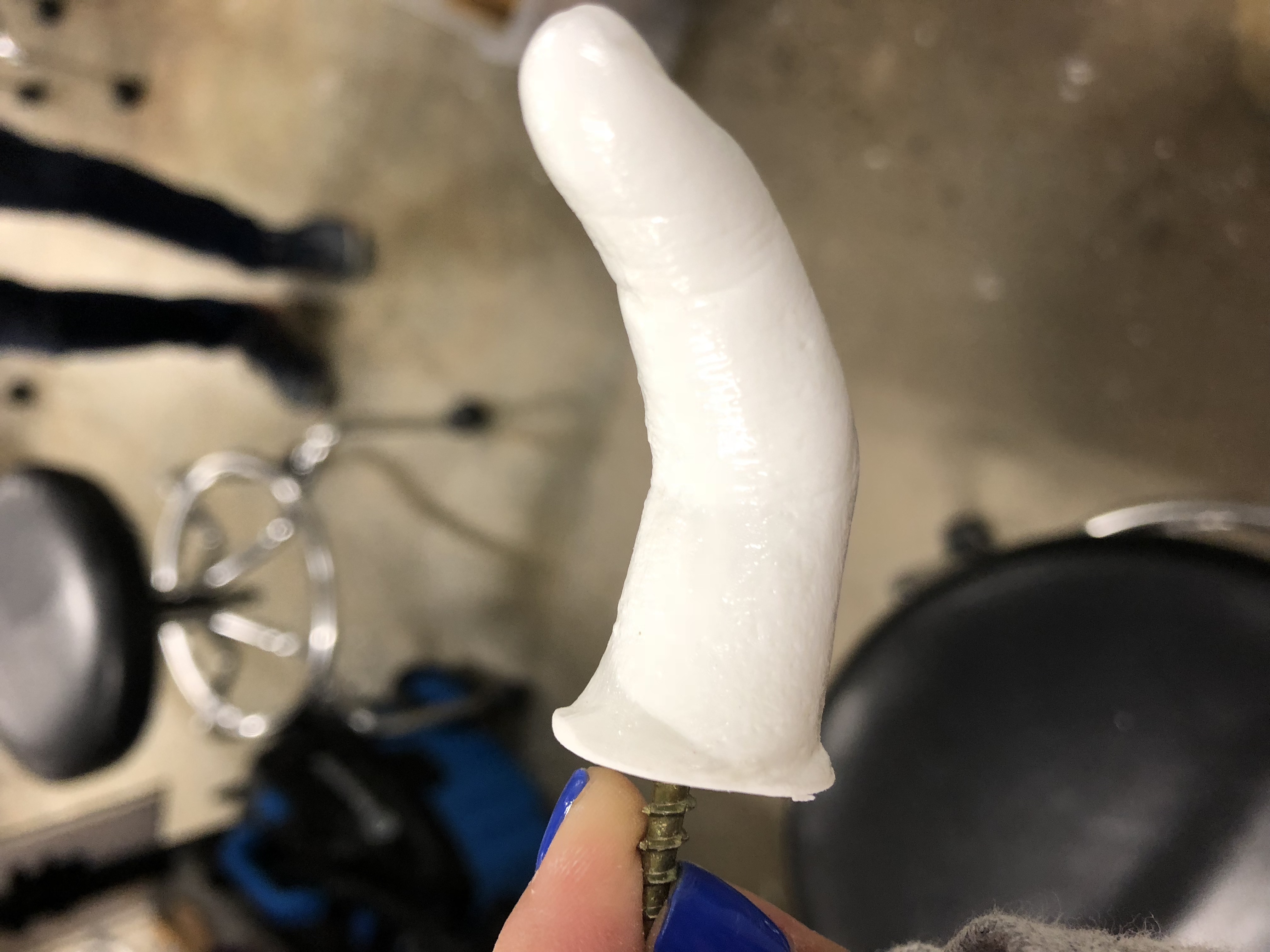For this assignment, we were to mold a finger to make a wall hook. Honestly, I was dreading this assignment. Molding and casting is possibly my least favorite thing to do, and it still is. It took me way too many tries to get this right.
I started out by mixing the alginate. It’s a 1:4 ratio of alginate to water by weight (which I forgot), so I mixed 6 fl. oz of alginate with 24 fl. oz of water, which actually made a mold but it was super clumpy and watery. I tried to cast my finger in that and it came out horribly, with a lot of imperfections.
This is when Josh came by and started his assignment and reminded me that 6 fl. oz. does not equal 6 oz. This meant that I was putting WAY to little alginate in the water. I tried again, and this time it looked better but there were still a lot of imperfections in the mold and I’m not sure why, so I tried again, this time only casting one finger at a time.
This time I stuck my finger in the alginate before it turned white and kept it in there longer and that seemed to have helped the end product have less bumps.
For post processing, I cut the excess around the base of the finger and sanded it a little. I didn’t really want to sand the actual finger because then it would lose the details of the finger. I couldn’t really think of a good way to get rid of the imperfections on the finger.
From this assignment, I learned that molding and casting takes a lot of patience that I don’t really have. You have to do every step pretty carefully to avoid mistakes. Also, I think the alginate is a little difficult to work with. It’s water based which makes it difficult to cast with the plastic mixture, and that could be one of the reasons why there are so many imperfections.






